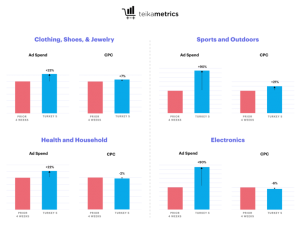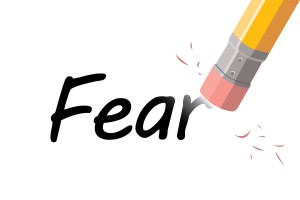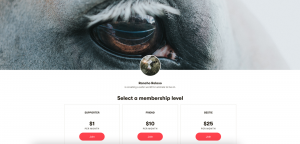The key to marketing success and scale is to refine your customer journey down to the essentials — the critical path.
Why is the customer journey so complex? How can we improve the customer journey to deliver better results?
Marketers understand the concept and importance of the customer journey. You must know how customers find you and do business with you if you want to succeed.
The more you can improve the customer journey, the better customer experience you can deliver and the more effective your marketing will be.
But there’s one big problem — the customer journey is incredibly complex.
Today we have more channels, creatives, messages and touchpoints than ever. How can we possibly understand, measure and optimize the customer journey when it has outgrown our limitations?
The answer is simpler than you might think, but it’s something that most marketers completely overlook.
The customer journey cornerstone
The Pareto principle (a.k.a., the 80/20 rule) states that 80% of the outcomes come from 20% of the efforts. Whenever I assess a marketing team, I find this principle in full effect.
Most of the revenue and results of your marketing are the product of 20% of your efforts. And the same is true for your customer journey. You may have many different paths and touchpoints, but not all of them are contributing equally.
The key to marketing success and scale is to refine your customer journey down to the essentials — the critical path. Then you can optimize and expand it to maximize your impact.
Too often, marketers become complacent and give every channel and every touchpoint the same resources and priority. In practice, very few are actually contributing to the majority of your marketing performance.
Here are three steps to take control of your customer journey and accelerate your growth:
- Analyze and understand the 20% of your customer journey that drives 80% of your performance (your critical path).
- Optimize your critical path to boost results with leverage.
- Maximize your results by connecting the other paths of the customer journey to your critical path.
Let’s explore each of these steps.
Finding your critical path
There’s always a critical path. The first step is to find it.
The easiest way to find the critical path of your customer journey is to imagine turning off all of your marketing, one by one. Which pieces, when turned off, would cause the biggest impact on your business?
This will vary greatly from one business to the next, but here’s an example.
One of my clients sells dog fences that are seasonal (people don’t install a fence in the winter) and, for the most part, a transactional purchase. People search on Google when they are ready to invest in installing a fence for their dog.
As a result, Google Ads are part of their critical path. If they turned off their Google Ads, the business would come to a screeching halt.
Conversely, they also do email marketing, but the impact from that is minimal and would be hardly noticed if it was stopped.
However, a single channel isn’t the entirety of their critical path. When people click their Google Ads, they are taken to a landing page and then pushed through an appointment funnel, where they are routed to the right distributor.
All of these parts — the Google Ads, the landing page and the appointment funnel — make up their critical path.
Are they investing in other marketing efforts and channels? Absolutely. But they recognize that this is the “heartbeat” of their marketing, their critical path.
And as such, it must be finely tuned and maintained to drive revenue and results consistently.
Paying off debt
Before thinking about scaling and growth, we have some cleanup to do. When you let your customer journey run amuck without pruning, it can easily get out of hand. It becomes confusing, complex and convoluted.
Once you know your critical path, you must cut away everything that’s either a bottleneck or not contributing. Cut ruthlessly and without regret.
The goal at this stage is to reduce friction, optimize the critical path and improve performance. To do so:
- Consider every touch point and interaction and analyze how it can be made more seamless and direct.
- Ask how the clarity of the message can be improved.
- Identify anything nonessential that can be removed.
If you’re struggling with this step, I recommend bringing in some real users for a usability test and asking them to complete certain goals, like finding your product online and attempting to purchase based on specific criteria.
By watching how they behave and what they do, you’ll instantly realize how many assumptions marketers make versus how people actually think and act.
All roads lead to Rome
Congratulations! At this point, you’ve found your critical path and refined it to the point of peak performance. Many marketers never make it this far, but there’s still more work to be done.
“All roads lead to Rome” is an old proverb that illustrates how, no matter what path you take, you always end up at the same destination. This is exactly how you should think about your customer journey and the critical path.
Don’t build multiple customer journeys or try to expand the critical path. Instead, connect all other paths to the critical path.
This way, the critical path is now consciously and strategically identified as paramount and of utmost priority. All other efforts will benefit from the optimizations you’ve made to the critical path.
In some cases, this happens naturally. For example, for ecommerce companies, every user may ultimately end up in the checkout experience of your website.
But your critical path isn’t always your checkout experience. It may be the most profitable path before that step.
Splitting up the customer journey into little pieces, or micro-journeys, is a good way to map them out and visualize how each of them connects and leads to the critical path.
Fixing your customer journey is critical
The customer journey has become overly complicated. Marketers love talking about the customer journey in abstract terms, but few invest the time and effort to understand it, let alone improve it.
If you don’t know your critical path, it’s paramount that you find it. Understand what it is and spend time refining and improving it. That alone will deliver a better customer experience and boost your performance.
After dissecting your customer journey, reconfigure it and reconnect the pieces to form a strategic, thoughtful and high-performing journey that delights your customers and your stakeholders.
The post 3 steps to navigating the complex customer journey appeared first on MarTech.
MarTech(15)
Report Post







